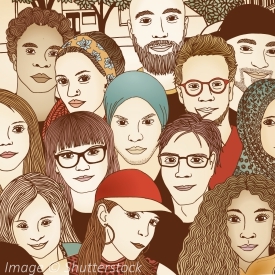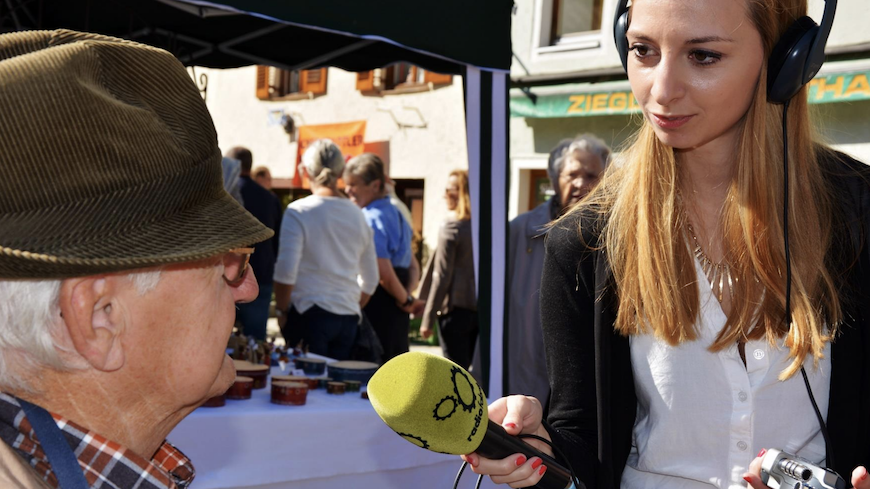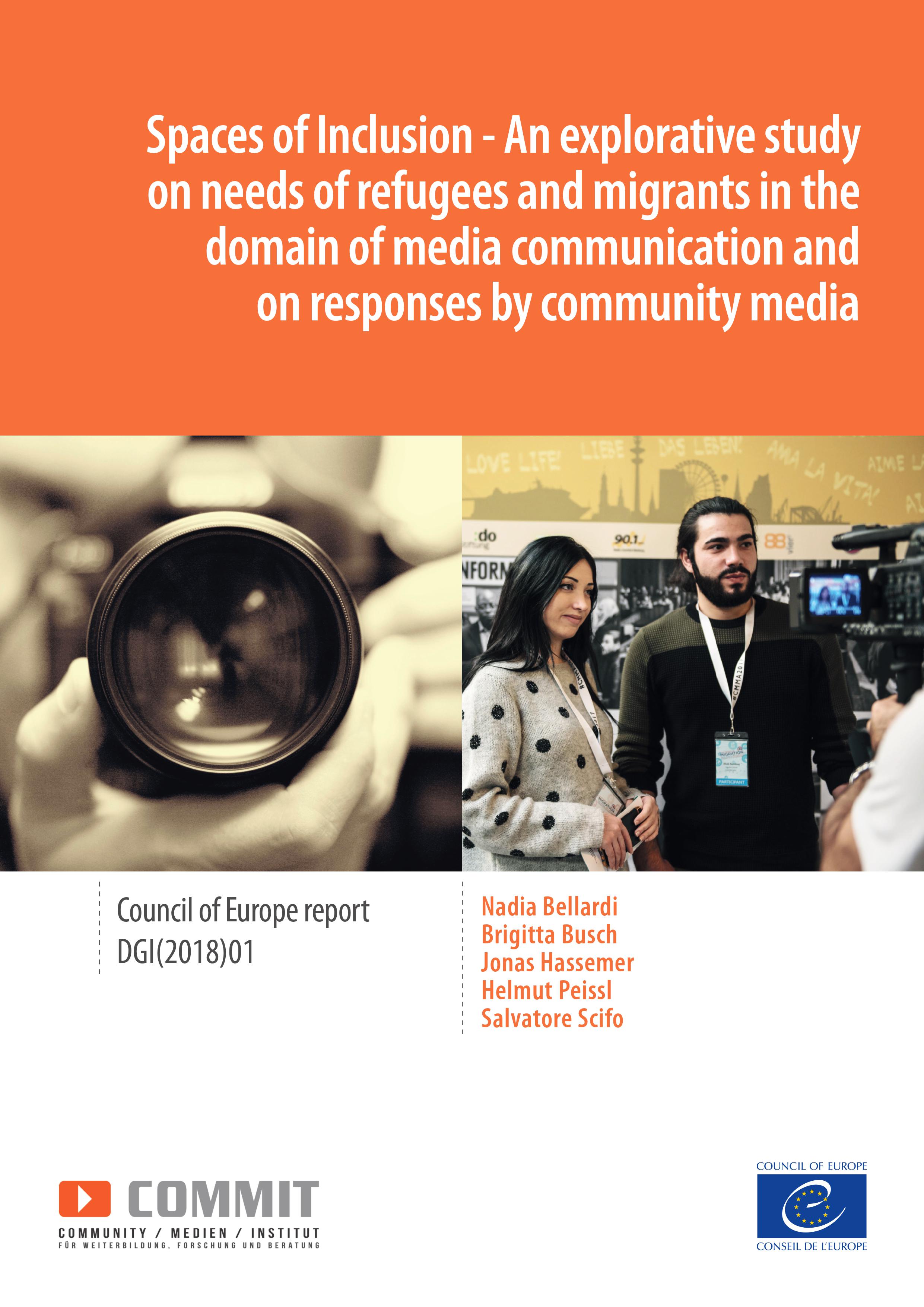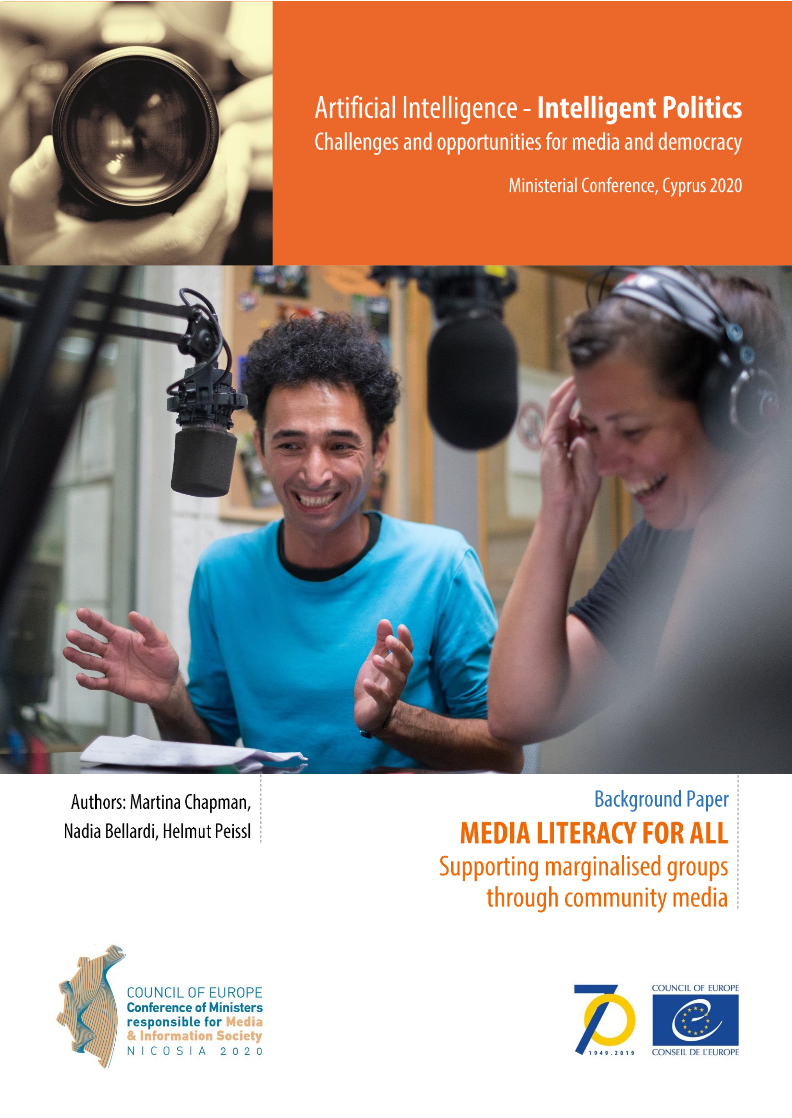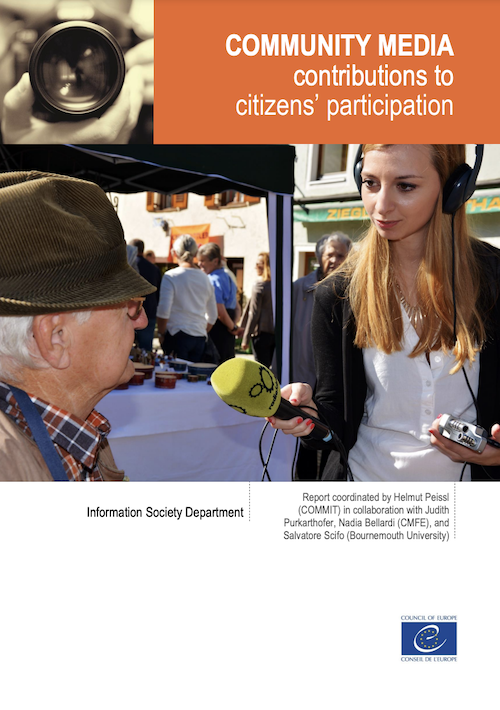Community media are referred to as a “tool of communication for people in hundreds of communities which are run for the community, about the community and by the community.”
The Council of Europe, along with other EU institutions and supra-national organisations, have been working for decades towards the promotion of a more diverse media landscape in Europe and around the world. But while the recognition of community broadcasting worldwide has been growing, community media still occupies marginal positions compared to mainstream media and is struggling in some European countries to be recognised as a legitimate third media sector in legislation. In addition, for community media to be recognised, there is a crucial need for transparent and reliable funding schemes as well as an important need for recognition of volunteer engagement and support for local anchorage of community media and their activities.
The report on COMMUNITY MEDIA — contributions to citizens’ participation analyses how community media provide spaces for local dialogue and cohesion across generations and different communities. It highlights the benefits and challenges of community media and offers recommendations based on case studies from a selection of countries that were put together by researchers and media experts Nadia Bellardi (Austria, Germany and Switzerland), Koen Leurs, Elaine Nolten and Lola de Koning (the Netherlands), Biljana Žikić (Serbia, Bosnia and Herzegovina and Slovenia), and the Groupe d’études et de recherches sur la radio (GRER), coordinated by Anne-Caroline Fievet (France). The report was developed by Helmut Peissl (COMMIT) in collaboration with Judith Purkarthofer, Nadia Bellardi (CMFE), and Salvatore Scifo (Bournemouth University).



